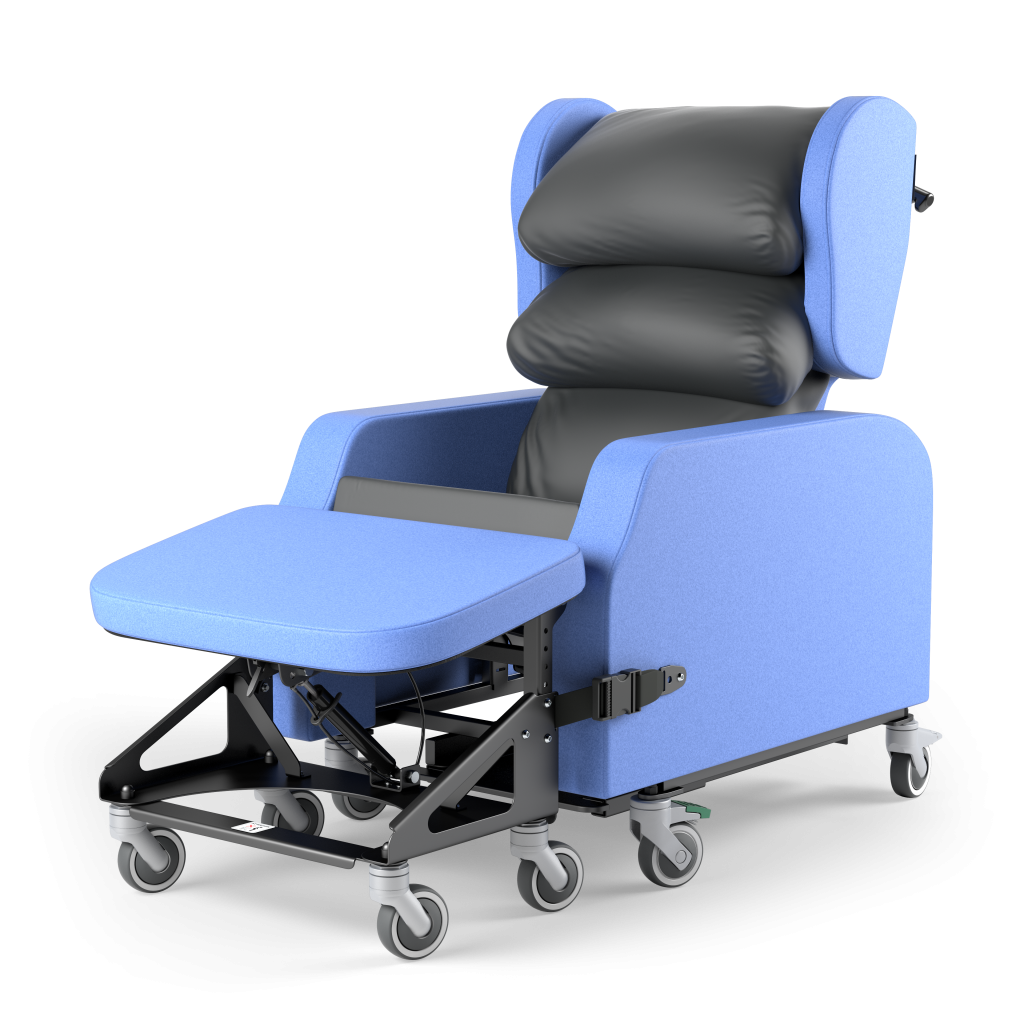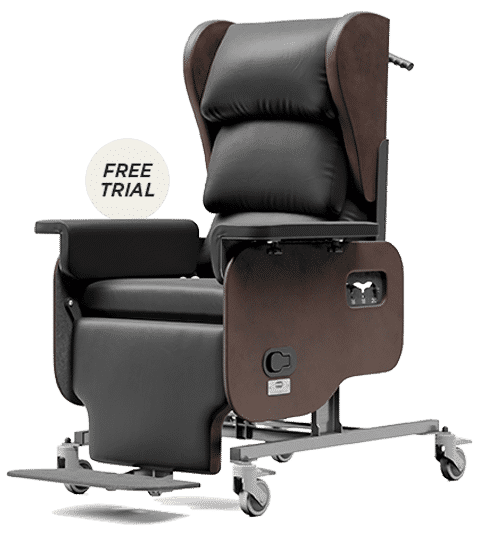Considerations When Seating a Client with Huntington’s Disease
By Kirsty O’Connor, Seating Matters Clinical Training Manager & Occupational Therapist
Huntington’s Disease is a rare, inherited disease, which causes nerve cells in an area of the brain to break down and die.1 A child born to a parent who carries the gene has a 50% chance of developing Huntington’s Disease.1
The condition typically occurs in people aged in their forties or fifties. A less common form of Huntington’s Disease is the juvenile form, which begins in childhood and adolescence.2 This juvenile form processes more rapidly than adult Huntington’s Disease, and seizures usually occur in 30% to 50% of children.2
Symptoms can vary from person to person, but can include:
- Irritability
- Depression
- Trouble learning new information and making decisions
- Involuntary, jerky movements (chorea)
- Muscle problems, such as rigidity or contractures
- Slow or unusual eye movements
- Impairments related to gait, balance and posture3
Seating a Patient With Huntington’s Disease
It is very important to consider the progressive nature of the condition, and that symptoms and trajectory can vary from person to person. This means that seating must be able to adapt to the changing needs of the person. Seating must also consider the involuntary movements that accompanies Huntington’s Disease and reduces the risk of causing injury or harm to the person.
Some Seating Considerations
- Seating must promote good posture and support
- Chair must be sturdy and robust to withstand jerky or forceful movements
- Seat should be sloped so the person’s hips are below the knees, to reduce the risk of slides and falls
- Reduce risk of developing pressure injuries
- Facilitate easy repositioning
- Increase comfort and feelings of safety
- Facilitate function by accommodating engagement in regular activities enjoyed by the person
- A belt or harness should be avoided, this can pose a choking risk or danger to the person. This should only be recommended following a comprehensive assessment by qualified professionals.
Seating Matters Atlanta™ Chair
The Atlanta™ chair was designed specifically for people with Huntington’s Disease by Martina Tierney, an occupational therapist and founder of Seating Matters. Some of the features of the chair which benefit those living with Huntington’s disease include:
- The Atlanta™ is a safe, comfortable chair which provides dignity to people at risk of falling, sliding or injuring themselves.
- The Atlanta™ can accommodate people who are challenging to seat, and is often used for those with Huntington’s disease, late-stage dementia or in a palliative care setting.
- The chair is low to the ground and very stable, meaning it will not tip due to vigorous involuntary movements or impulsive behaviours.
- The chair is well padded and has no areas of entrapment, reducing the risk to the user.
- The chair seat width can be reduced by adding additional padding to the arm rests in the event of weight loss to ensure a suitable and comfortable fit.
- The integrated tilt and recline feature positions the person deep into the chair, helping to reduce sliding.
- The deep seat position provides a soothing and reassuring environment to promote calm and relaxation.
- The high arm rests help support those who tire and have difficulty maintaining an upright posture.
How the Atlanta can keep people with Huntington’s Disease safe
- The seat angle adjustment and back angle adjustment on the Atlanta™ means the pelvis can be lowered low down into the chair reducing the effect of the involuntary movements typical with Huntington’s Disease.
- The integrated fully padded leg rest is angle adjustable to maintain a secure and comfortable position in the chair and can be used with the seat or taken away if not required.
- The high arms and low seat angle position can help keep patients very safe and secure within the chair.
- The arms are fully memory foam padded to reduce any risk of injury as a result of involuntary movements.
- The high arms maintain lateral support and stability keeping the patient comfortable and minimising pressure risk.
- The Atlanta has been successful chair for Huntington’s patients, Dementia patients, Parkinson’s patients and those suffering from lower limb oedema.
Support & Advice
Living with Huntington’s can be very challenging, and it is important to be aware of local and national support services which are available to provide you with support and information. Some support organisations are listed here:
- Huntington’s Disease Association of Ireland https://www.huntingtons.ie/index
- Huntington’s Disease Association UK https://www.hda.org.uk/
- Huntington’s Disease Network of Australia https://hdna.com.au/
- Huntington’s Disease Society of America https://hdsa.org/
References
- Huntington’s Disease association of Ireland (2013) ‘What is Huntington’s Disease?’
https://www.huntingtons.ie/What-is-Huntingtons-Disease - Medline Plus (2020) ‘Huntington disease’
https://medlineplus.gov/genetics/condition/huntington-disease - Huntington’s Disease society of America (2023) ‘Overview of Huntington’s Disease’
ttps://hdsa.org/what-is-hd/overview-of-huntingtons-disease/






